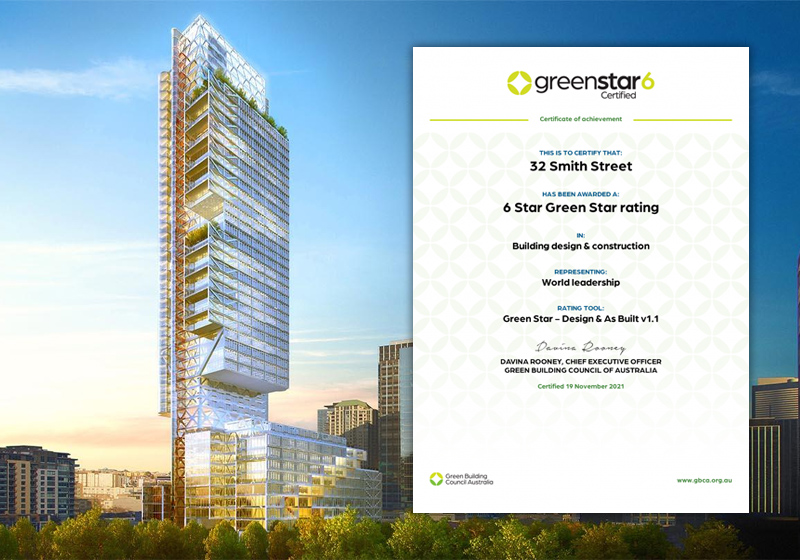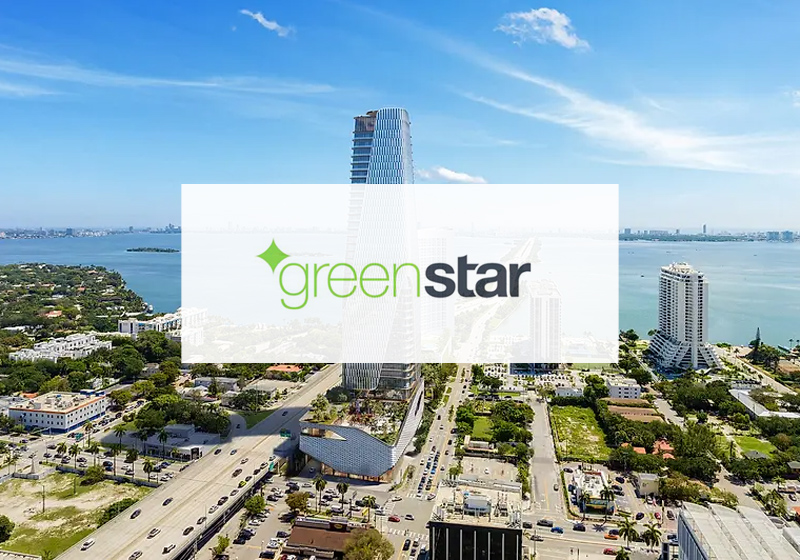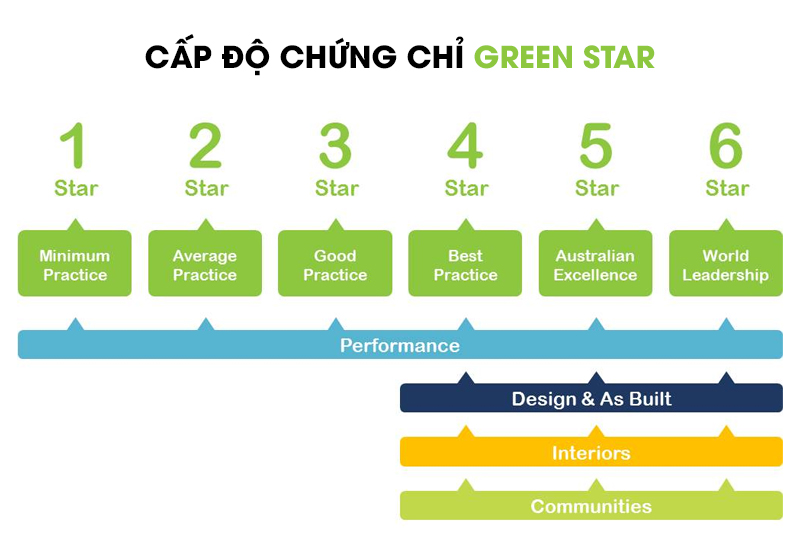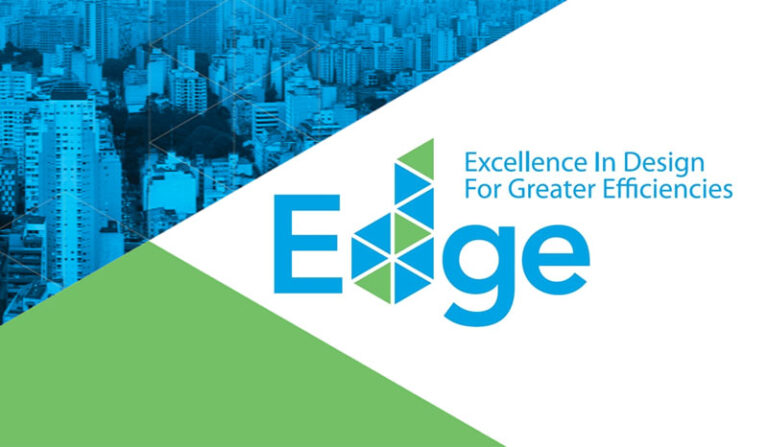Green Star Certification: Australia’s Leading Green Building Rating
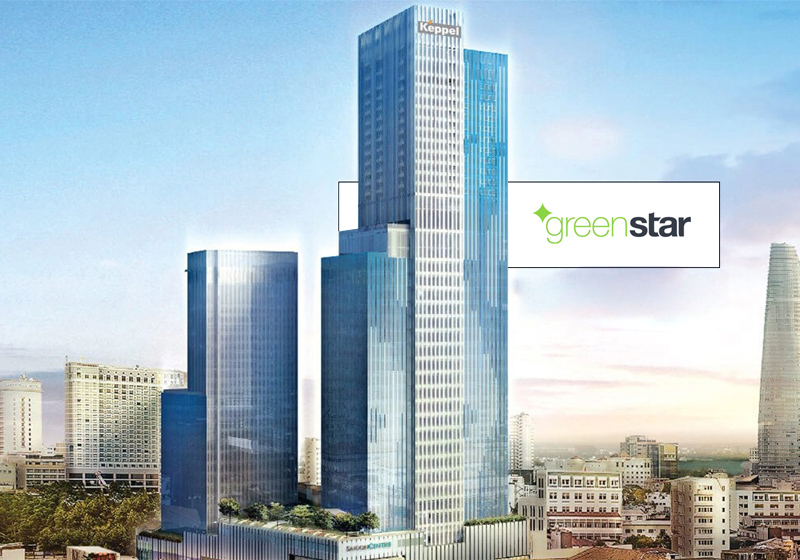
Sustainable building trends have become a crucial requirement in the context of global challenges such as climate change and resource depletion. In this context, the Green Star certification has emerged as an important tool for assessing the environmental performance of construction projects. Achieving this certification not only enhances the value of the property but also demonstrates a company’s commitment to sustainable development.
Table of Contents
- What is Green Star Certification?
- Origin of the Green Star Standard
- Objectives of the Green Star Rating System
- Updated Versions of Green Star Certification
- Green Star Rating Criteria
- Green Star Certification Levels
- Pros and Cons of Green Star Certification
- Green Star Certification Process
- Green Star Standards for Office Buildings
- Top Green Star Office Buildings in Vietnam
What is Green Star Certification?
Green Star is a sustainable building rating system developed by the Green Building Council of Australia (GBCA). This certification is awarded to construction projects that meet high standards for environmental protection and sustainable resource use.
Green Star can be applied to various types of buildings, from residential homes and office towers to schools, hospitals, and public works. The system evaluates buildings based on several criteria, including energy efficiency, water conservation, indoor air quality, building materials, waste management, and the overall environmental impact of the project.
Currently, the Green Star standard is not only used in Australia but has expanded to countries such as Malaysia, New Zealand, and South Africa.
See more about global green building certifications:
- LEED Certified
- WELL Certified
- Green Mark certification
- LOTUS certification
- EDGE certification
- Green Star certification
Origin of the Green Star Standard
Green Star was developed and is managed by the Green Building Council of Australia (GBCA), which was established in 2002 as a non-profit organization aimed at encouraging and promoting sustainable building solutions in Australia. Green Star is the key tool for evaluating and certifying buildings that meet high sustainability standards in terms of energy, resource use, and environmental impact.
Today, Green Star is one of the most widely recognized green building rating systems globally, with many countries adopting it as a benchmark for sustainability in the construction industry.
Objectives of the Green Star Rating System
Green Star aims to achieve the following key objectives:
- Environmental Protection: Prioritizes reducing the negative environmental impacts of buildings, evaluating energy use efficiency, waste management, resource consumption, and pollution control.
- Resource and Energy Conservation: Focuses on optimizing resource use through design and operational solutions, which helps reduce operational costs and conserves natural resources for sustainable development.
- Increasing Asset Value: Buildings with Green Star certification are often valued higher due to their superior performance and operational cost savings, attracting potential investors and buyers.
- Improving Quality of Life: The system is not only about technical factors but also creating better living and working environments for occupants, ensuring indoor air quality, natural lighting, and creative design.
- Promoting the Sustainable Construction Industry: Green Star provides guidance for the construction industry to transition to more sustainable methods. By encouraging innovation and green technologies, it plays a significant role in raising industry standards.
Updated Versions of Green Star Certification
Since its launch in 2003, Green Star has undergone several updates, including:
- Green Star v1.0: Introduced in 2003, focusing on basic energy efficiency, resource management, and environmental protection.
- Green Star v2.0: Launched in 2006, focusing on evaluating office buildings.
- Green Star Office v3.0: Released in 2009, improving evaluation criteria and adding sustainability factors for office buildings.
- Green Star Communities v1.0: Launched in 2008, focusing on multi-use development projects.
- Green Star Education v1.0: Released in 2010, targeting the sustainability of educational buildings.
- Green Star Healthcare v1.0: Introduced in 2011, focusing on healthcare facilities like hospitals and medical centers.
- Green Star Design & As Built v1.3: A refined version aimed at assessing buildings from design through to completion, ensuring both sustainable design and high performance in operation.
Each version of Green Star has evolved to better meet the changing demands and requirements of the construction industry.
Green Star Rating Criteria
Green Star evaluates buildings based on a comprehensive set of sustainability criteria. The total points scored across these criteria determine the level of certification awarded. The key evaluation criteria include:
| Criterion | Evaluation Focus |
| Energy Performance | Assessing energy efficiency, including reducing energy consumption and using renewable energy. |
| Water Conservation | Evaluating water-saving solutions. |
| Waste Management | Assessing waste management, recycling, and reduction practices during construction and operation. |
| Recycled Materials | Assessing the use of sustainable, recycled materials. |
| Indoor Environmental Quality | Evaluating indoor air quality, natural lighting, and overall work environment. |
| Greening the Building | Assessing the incorporation of green spaces, landscaping, and stormwater management systems. |
| Community and Social Interaction | Evaluating community engagement and sustainable social activities. |
| Operational Performance | Assessing building operational performance, including ongoing energy management and air quality monitoring. |
Green Star Certification Levels
Green Star uses a rating system with six levels, which reflect a building’s sustainability performance. These levels range from the minimum sustainability practices to world-leading achievements.
- 1 Star Green Star (10-19 points): Minimum practice, recognizing basic sustainability efforts.
- 2 Star Green Star (20-29 points): Demonstrates moderate sustainability practices with some resource optimization and environmental protection solutions.
- 3 Star Green Star (30-44 points): Recognizes buildings that implement good sustainable design and construction solutions.
- 4 Star Green Star (45-59 points): A significant improvement in energy use, resource conservation, and environmental protection.
- 5 Star Green Star (60-74 points): Awarded for exceptional performance in minimizing environmental impact.
- 6 Star Green Star – World Leadership (>75 points): The highest certification level, reflecting world-leading sustainability performance that exceeds standard expectations.
Pros and Cons of Green Star Certification
Pros
- Promotes Sustainable Development: Green Star encourages projects to adopt resource-saving and eco-friendly solutions.
- Operational Cost Savings: Buildings with Green Star certification tend to have higher energy efficiency, leading to long-term cost savings.
- Increased Asset Value: Certified buildings are often valued higher, making them attractive to investors and potential buyers.
- Builds Reputation: Achieving Green Star certification signals a company’s commitment to sustainability, enhancing its reputation.
- Improves Quality of Life: Projects with Green Star certification positively impact communities, improving living and working conditions.
Cons
- High Initial Investment: Achieving Green Star certification may require significant upfront investment in green technologies and sustainable materials.
- Complex Certification Process: The certification process can be lengthy, requiring extensive documentation, time, and resources.
- Long-Term Commitment: Green Star requires buildings to maintain sustainability standards throughout their lifecycle, which can be challenging for owners.
- Not Suitable for All Projects: Smaller or budget-constrained projects may find it difficult to meet Green Star’s rigorous requirements.
Green Star Certification Process
The certification process, managed by GBCA, includes the following steps:
- Project Registration: The developer registers the project with GBCA, providing basic project details and selecting the appropriate Green Star certification.
- Document Preparation: The developer prepares and submits the necessary documentation as per Green Star requirements.
- Project Evaluation: GBCA or an authorized entity conducts a detailed assessment based on Green Star standards.
- Review and Feedback: GBCA provides feedback and requests adjustments if needed to meet the criteria.
- Certification Issuance: Once the project meets all requirements, GBCA awards the Green Star certification based on the project’s performance.
After receiving the certificate of approval, the project must maintain and comply with the established standards to ensure long-term sustainability, particularly for operational buildings.
Green Star Standards for Office Buildings
Green Star certification for office buildings, referred to as “Green Star – Office Design & As Built,” focuses on sustainability criteria specific to office environments.
Key evaluation criteria include:
- Energy Performance: Optimizing energy use and reducing greenhouse gas emissions with energy-efficient lighting and HVAC systems.
- Water Conservation: Installing water-saving technologies such as low-flow fixtures and rainwater harvesting systems.
- Waste Management: Implementing waste reduction strategies, including recycling and minimizing construction waste.
- Recycled Materials: Encouraging the use of sustainable, recycled building materials.
- Indoor Environmental Quality: Ensuring healthy and comfortable workspaces with quality air, natural light, and appropriate temperature control.
- Greening the Building: Integrating green spaces into the workplace.
- Operational Performance: Maintaining energy performance and indoor environmental quality over the building’s lifespan.
Top Green Star Office Buildings in Vietnam
In Vietnam, several office buildings have achieved Green Star certification, demonstrating their commitment to sustainability:
- Saigon Centre Office Tower 2: This office building in District 1, Ho Chi Minh City, received the 5-Star Green Star – Office Interiors v1.1 certification in 2017, showcasing its sustainable interior design.
- Saigon Marina IFC: This office building earned the 5-Star Green Star certification for its energy-efficient design.
- EDGE Office Building: The EDGE Office Building in Vietnam was awarded the highest rating, the 6-Star Green Star – Office Design & As Built v1.1, representing world-class sustainability and environmental performance.
In conclusion, Green Star certification plays a vital role in advancing sustainable building practices, especially for office spaces. With its comprehensive criteria, Green Star not only benefits the environment but also improves quality of life for building occupants and communities.

Editor and content team manager at Maison Office.
With over 5 years of experience in consulting and extensive content editing in the real estate services and interior design field. Sharing valuable information with customers, partners, and attracting millions of views.

